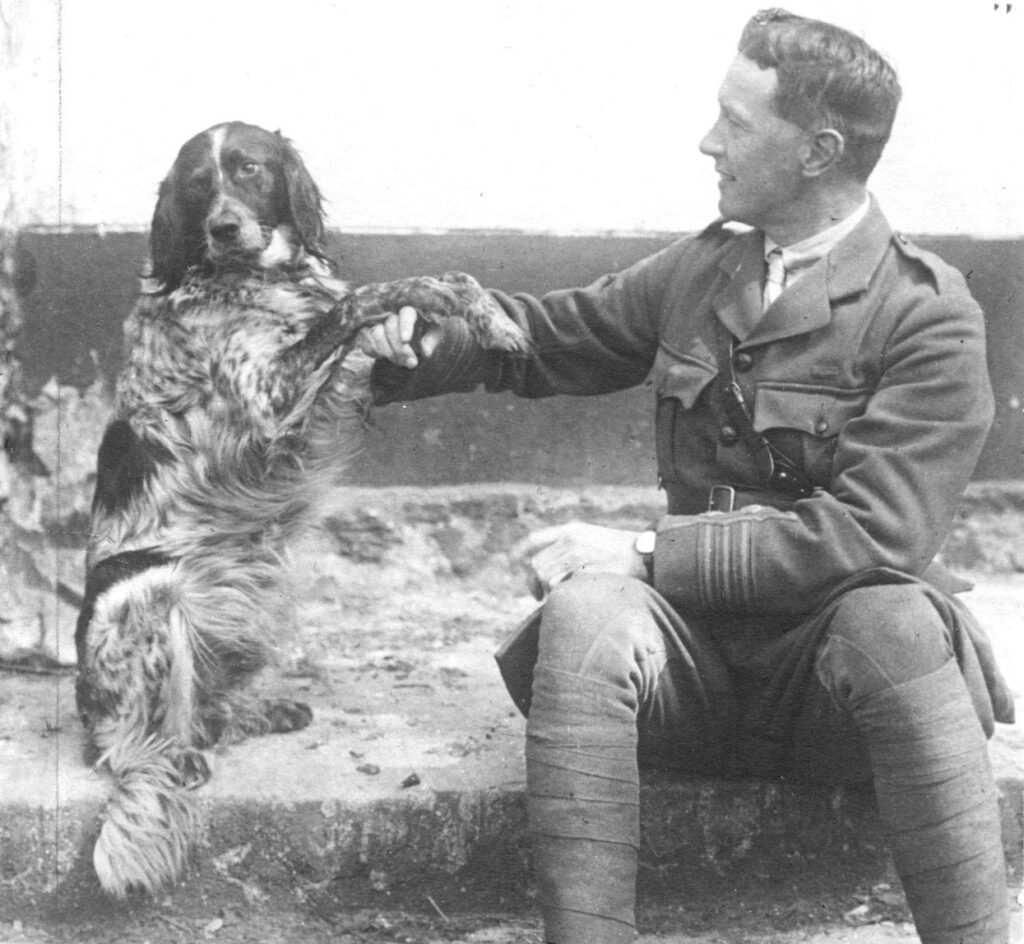

McGill University Archives PU025794
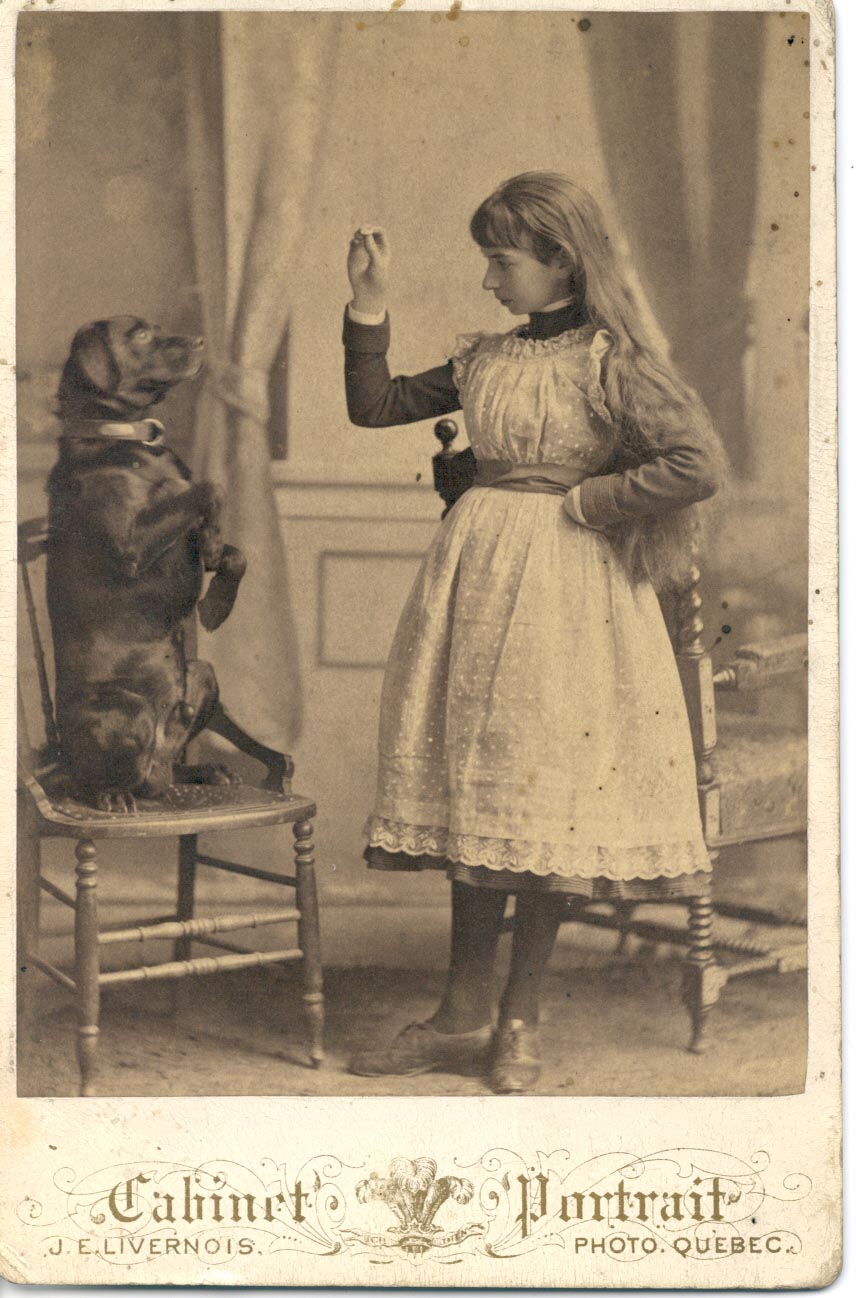
Trends in dog breed popularity come and go – but our love of dogs is here to stay. July weather brings us into the dog days of summer so we’ll take a moment to explore some canine curiosities and the pooches with more enduring “paw-pularity” through selections from our ROAAr collections.
A long love affair
We have loved dogs for a long time. Humans have been selectively breeding domestic dogs for at least 4,000 years – so today, they are the most “morphologically diverse” mammal on earth[1]. Particularly in the 19th century, owners began aggressively breeding for specific behavioural traits and characteristics. The result was an explosion of different breeds and a movement to protect purebred lines of established, recognized breeds. We can trace changes in our relationship with dogs over the years through photos, artifacts, advertisements, and kennel records – all of these give concrete snapshots of our long-time relationship with our four-footed friends.
Fast forward to today; dog owners today have a lot of breeds to choose from! As of 2022, there were 199 breeds recognized by the American Kennel Club (AKC), with many more that don’t make its roster. 2020-2022 saw many people getting pandemic puppies. For the past two years, demand for dogs shot up! Adoption rates were sky high, and rescues were finding homes at an incredible rate. As a collective response, it makes sense that, at a time of great uncertainty, finding ourselves chained to our homes, many of us chose to adopt an animal companion to care for and connect with.
While the pandemic boom in dog ownership was definitely a result of circumstance, some trends in dog breeds are contagious, and others are started and fed by the media. Think of the meteoric rise and fall in Dalmatian ownership following the Disney movie 101 Dalmations; after the film was re-released in 1985 there was an enormous surge in popularity – followed by a “decline of 97% within a decade.[2]”
Persistently pawpular
The Retriever

Let’s begin with the gold standard, the breed that has topped the American Kennel Club’s list of popular breeds for a stunning 31 years running.[3] The Labrador retriever has long been prized and its popularity has increased steadily since 1946.[4] Frankly, what is not to love? Goofy, good-natured, water-loving dogs whose even temperament has made them enduring favourites. Long before the lovable retriever was a part of the family, the breed was developed in mid-19th century Scotland as a water dog, a working animal prized by sportsmen.
Image: “Flat-coated Retriever.” From: Vero Shaw. The Illustrated Book of the Dog. London, New York, Peter, Galpin & Co. 1881. RBSC, Blacker Wood Collection
The Beagle
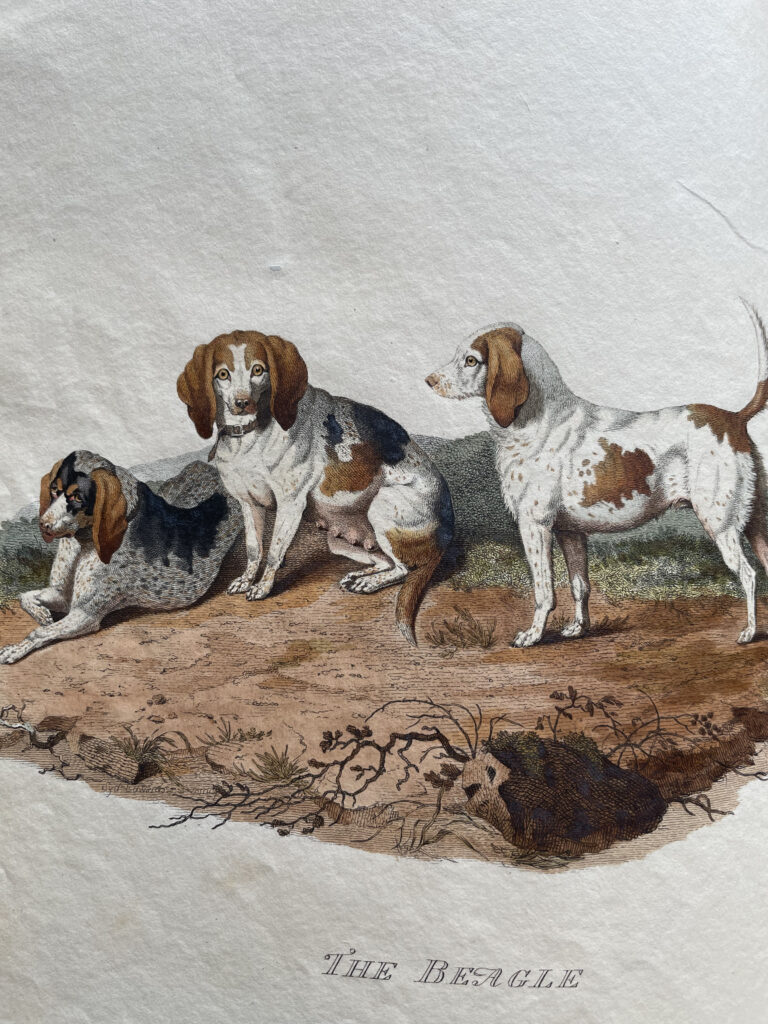
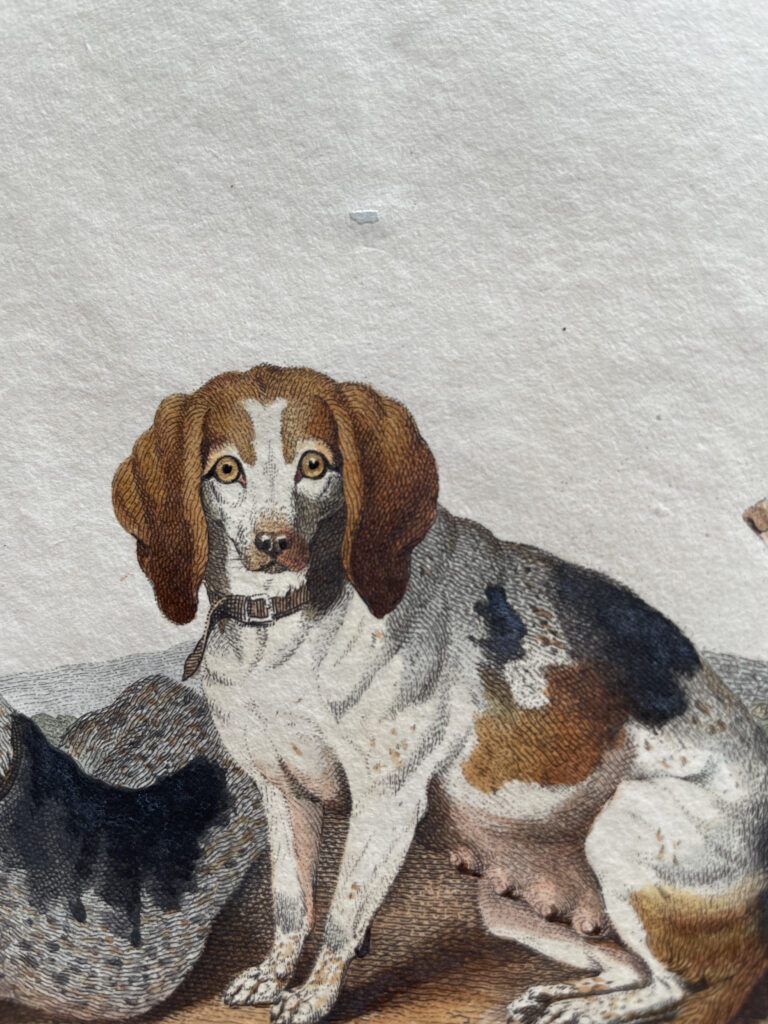
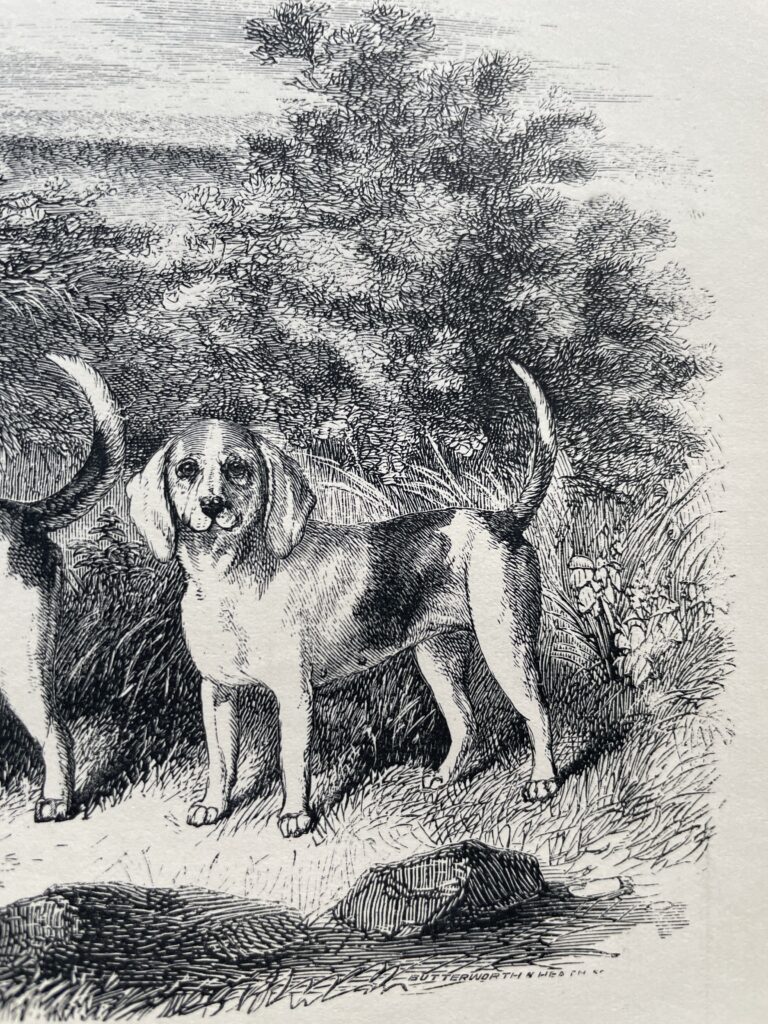

Another enduring favourite is the Beagle, ranked 7th overall in popularity by the AKC in 2021. Appreciation for this breed has changed a lot in the past 200 years. In 1800 this breed was described as the “least” of all hounds by Sydenham Edwards. In Cynographia Britannica [5], Edwards focused purely on the beagle’s functionality as a working dog. He was an enormously talented botanical artist, and his illustrations of the core English breeds at the time give keen insight into the period’s primarily functional appreciation of dogs. He focuses on their physical traits, their virtue as ratters, their ability to navigate terrain, their skills with catching and keeping a scent, and “endur[ing] bad weather [6].” He writes and illustrates for the serious business of keeping hunting dogs, and his descriptions, therefore, are much more in line with a description of livestock. Edwards provides a useful point of comparison to show how much has changed – in 2021 Beagles were described as “Friendly/Curious/Merry” on the AKC site – much like J.R.R. Tolkien’s description of hobbits perhaps for their personality and diminutive stature!
One famous beagle even achieved Warp 5 and interstellar flight! Porthos the Beagle is Captain Jonathan Archer’s dog in Star Trek; Enterprise, one of the only Terran pets to make it into the franchise. (Image Source: https://www.trekcore.com/specials/albums/rare/article27/archer_porthos_bts.jpg)
The Poodle
“One of the most intelligent breeds in existence, that of the Poodle, lends itself especially to becoming a pet or companion, soon becoming warmly attached to its owner, very quick at learning what is required of it, and very smart and vigilant as a guard. ”[7] Charles Henry Lane, All About Dogs: A Book for Doggy People, 1912.
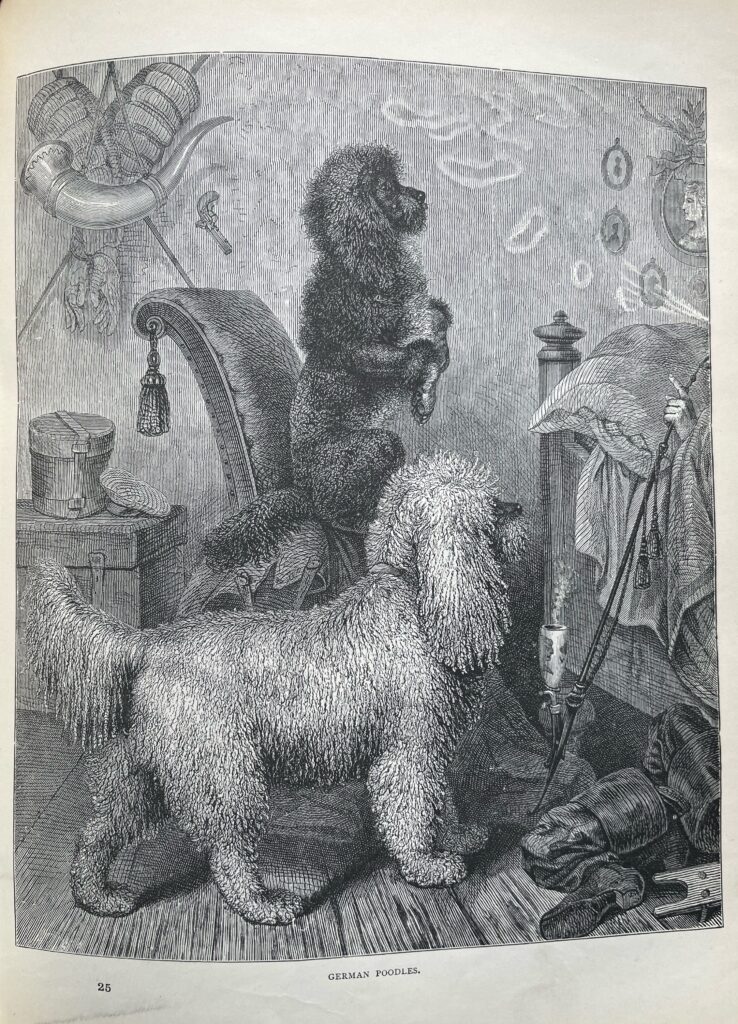
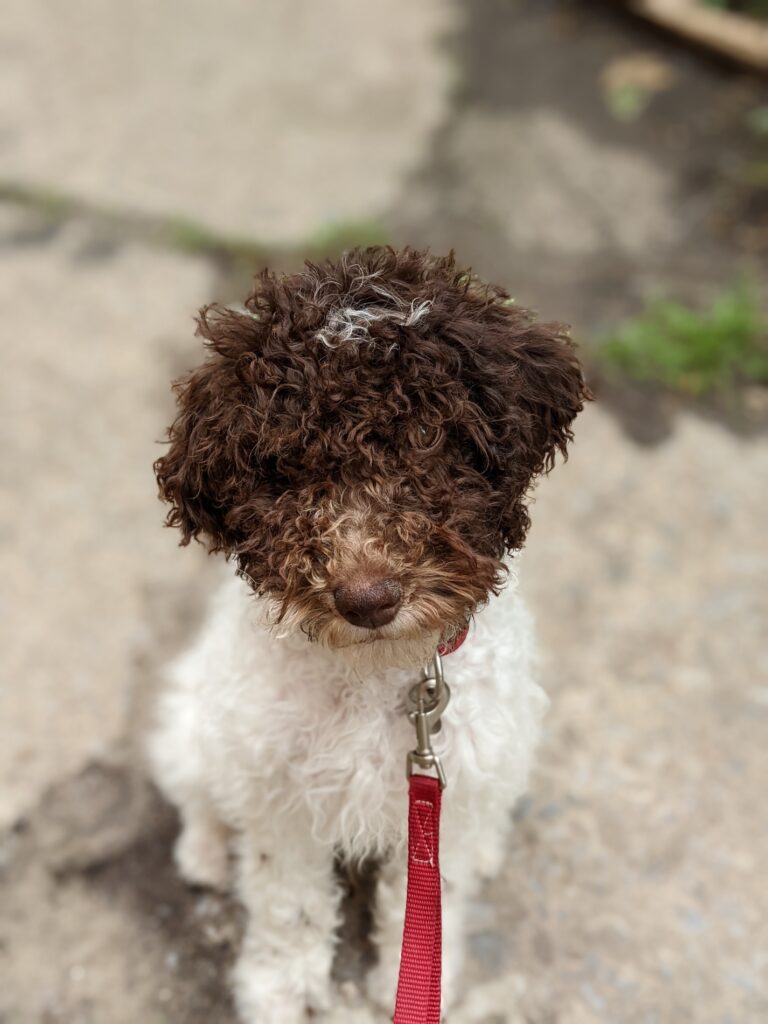
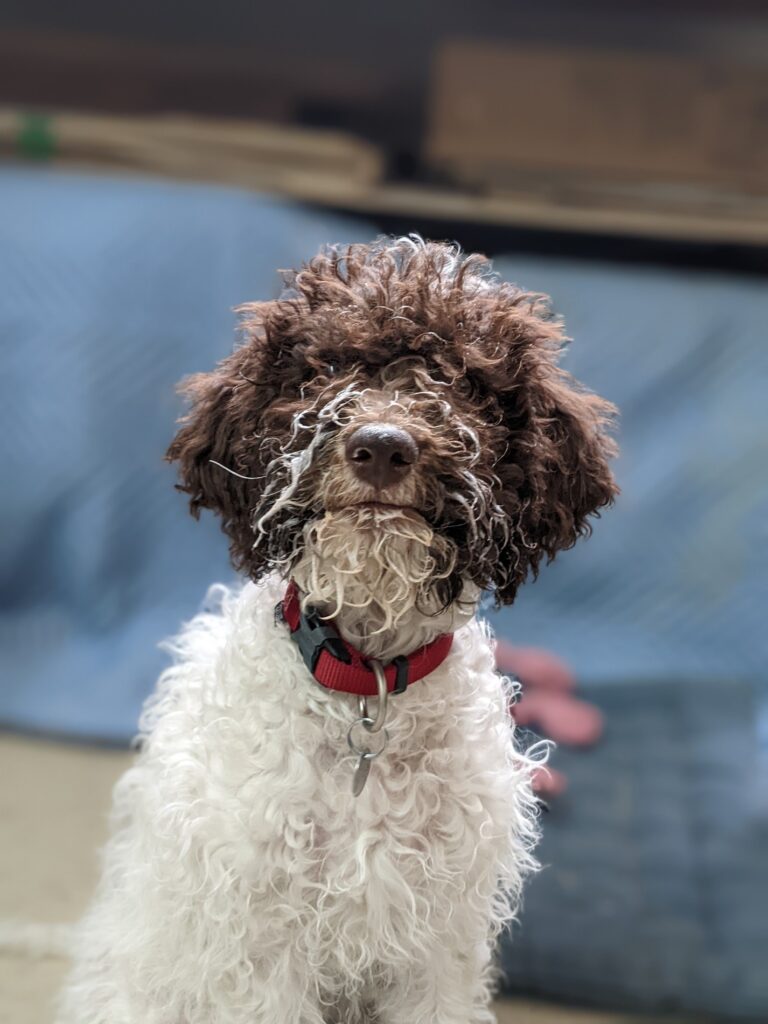
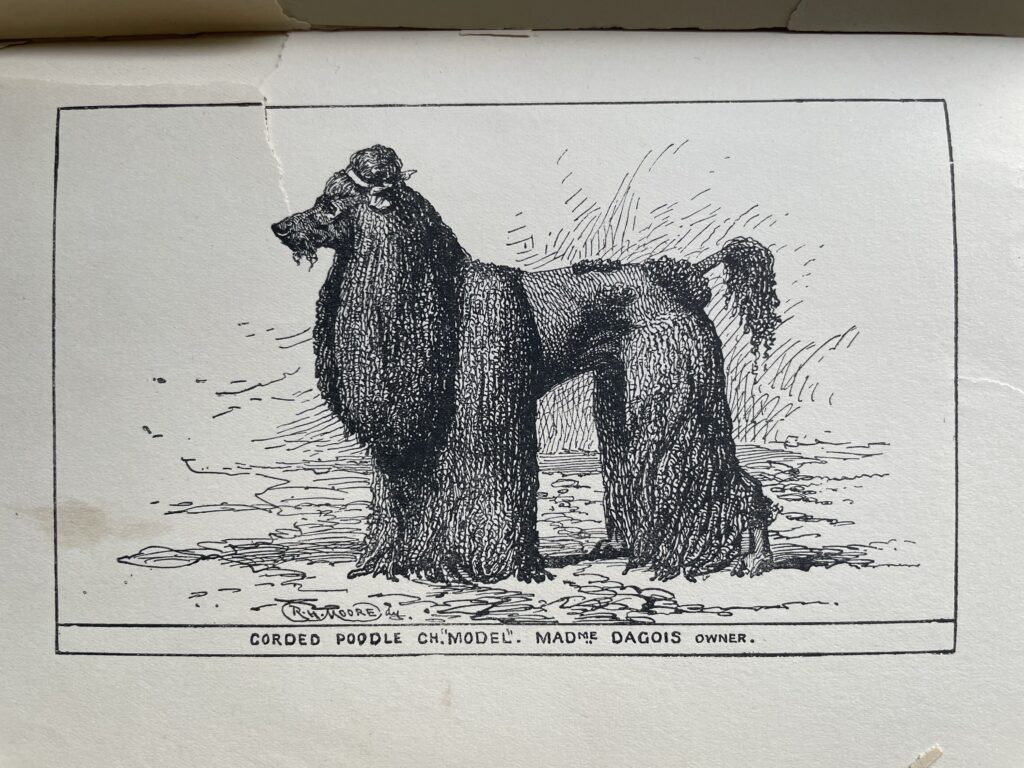
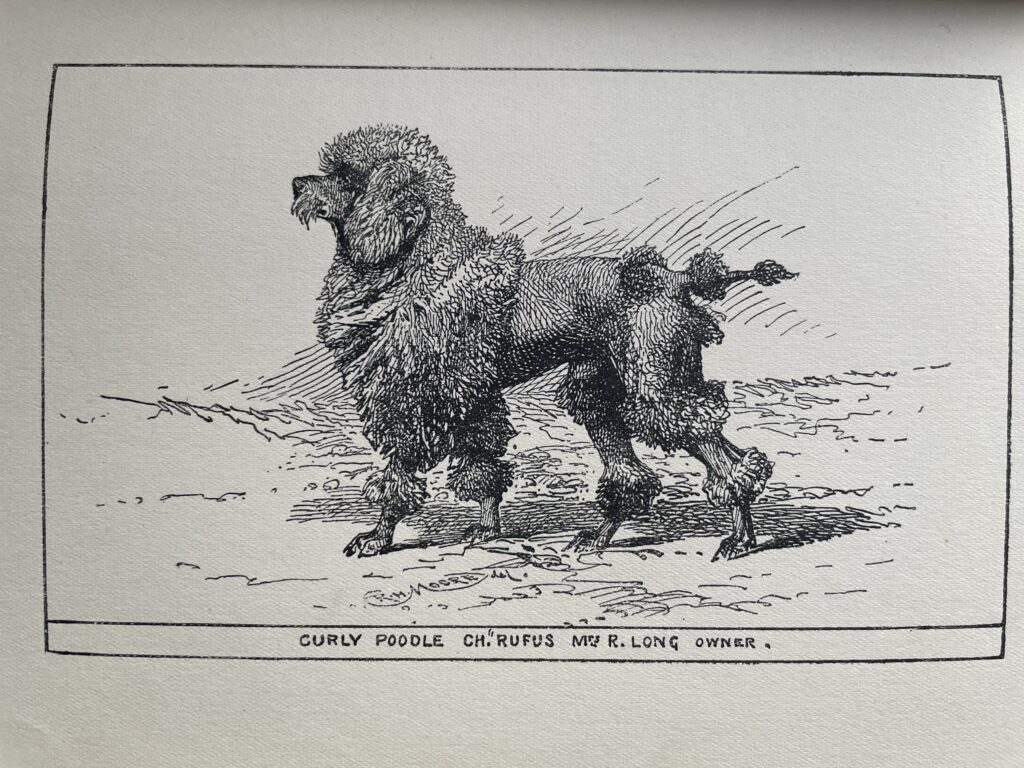
The poodle is a great example of a spike in breed popularity – recognized as a breed since 1897, in the 1950s they climbed rapidly in popularity and “literally spawned a change in fashion[8]” with the Poodle skirt! Beneath their curly, low-allergen coat is a clever and devoted dog. Despite the spike in the 1950s, the breed’s popularity has lasted and has made the AKC top ten since 2013. The two illustrations above from Charles Henry Lanes All about Dogs; A book for Doggy People (London, 1912) show two styles of grooming: Corded (above left) and the European or poodle cut (above right). Left to itself, a poodle’s coat will cord. The poodle cut was a practical grooming style from when Poodles were working – and highly intelligent- retrievers. The cut left long hair to protect the joints and chest from cold and trimmed the rest for ease of movement in the water.
The past few years have seen an explosion of Poodles crossed with other established breeds – Labradoodles, Berne-doodles and many more. Pictured in the gallery above is Cino, the latest addition to the McGill Library canine family. Cino is a Poodle-Lagotto Romagnolo cross, a breed that was bred specifically to find truffles. Photos courtesy of his owner, Carlo Della Motta.
Send us your favourite dog breeds and historical photos! Contact us by email at roaar.librar@mcgill.ca, or tag us in your dog photos on social media.
Further Reading
A great exploration of the history of dog ownership and pet ownership more generally is Katherine Grier’s Pets in America; A History. (Chapel Hill, North Carolina, 2006). See it in the library catalogue: https://mcgill.on.worldcat.org/oclc/60743146
[1] Harold Herzog. “Forty-two Thousand and One Dalmations: Fads, Social Contagion, and Dog Breed Popularity.”
[2] Herzog, “Forty-Two Thousand and One Dalmatians.” 385.
[3] Reisen. “Most popular Dog breeds of 2021.”
[5] Edwards, Cynographia Britannica.
[6] Ibid.
[7] Lane, All about Dogs; a Book for Doggy People, 98.
[8] Herzog, 390.
Works Cited
Grier, Katherine C. Pets in America: A History. Chapel Hill, NC: University of North Carolina Press, 2006.
Edwards, Sydenham. Cynographia Britannica : Consisting of Coloured Engravings of the Various Breeds of Dogs Existing in Great Britain, Drawn from the Life, with Observations on Their Properties and Uses. London : C. Whittingham, 1800. http://archive.org/details/McGillLibrary-rbsc_blackerwood_cynographia-britannica_folioOTCF26-20319.
Herzog, Harold. “Forty-Two Thousand and One Dalmatians: Fads, Social Contagion, and Dog Breed Popularity.” Society & Animals 14, no. 4 (January 1, 2006): 383–97. https://doi.org/10.1163/156853006778882448.
Lane, Charles Henry. All about Dogs; a Book for Doggy People,. London: J. Lane, 1912.
Reisen, Jan. “Most Popular Dog Breeds of 2021.” American Kennel Club. Accessed June 20, 2022. https://www.akc.org/expert-advice/dog-breeds/most-popular-dog-breeds-of-2021/.













Leave a Reply
You must be logged in to post a comment.